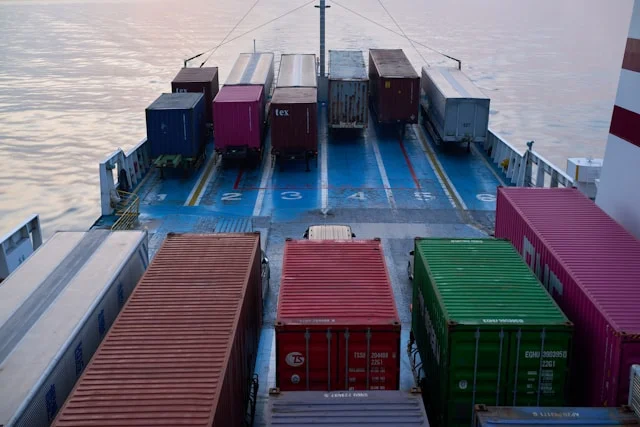Trade Tensions and Tariffs Reshape Markets: The Global Ripple Effect
Global trade has always been a delicate balancing act, but in recent years, it has become a high-stakes game that affects nearly every corner of the world. Trade tensions and tariffs have reshaped financial markets in ways few could have predicted. What used to be backdoor negotiations between diplomats is now headline material influencing stock prices, business decisions, and even what we pay for everyday items.
In an increasingly interconnected world, the impact of trade friction doesn’t stay within borders—it echoes across industries, regions, and populations. This article dives deep into how these tensions are changing the face of the global economy, one tariff at a time.
The Tariff as a Modern-Day Weapon
Tariffs were once seen as tools to protect local industries. But today, they have become weapons of economic power. Countries no longer just rely on traditional warfare to assert dominance; they use economic leverage.
By raising tariffs, a country makes imported goods more expensive, which can hurt foreign exporters. At the same time, this move can protect local producers from international competition. However, the reality isn’t always so black and white. These actions can trigger retaliation, leading to a domino effect of rising prices, slowed trade, and uncertainty in the markets.
Market Sentiment: A Game of Nerves
The global stock market thrives on confidence. The moment uncertainty creeps in—whether due to a political statement or a tariff hike—investors react. Sometimes they pull back, sometimes they panic, and other times they seize short-term opportunities.
Trade tensions act like a storm cloud over the financial world. Companies start rethinking their strategies. Some may delay expansions, others might look for alternate suppliers, and manufacturers begin calculating which markets are now too expensive to do business in.
Market sentiment can shift in minutes. One tweet, one policy change, or one diplomatic misstep can send stocks tumbling. Trade is no longer just an economic concern—it’s psychological warfare.
Supply Chains Under Siege
Few people outside the business world truly understand how fragile global supply chains are. A single part made in Vietnam, a sensor coming from South Korea, a chip produced in Taiwan—these are often essential components of products sold around the world.
Tariffs and trade restrictions throw these chains into chaos. When costs go up or routes become blocked, businesses scramble. Some relocate production to countries with fewer trade barriers. Others pass on the extra cost to consumers.
This realignment of supply chains takes time and money. It can lead to slower deliveries, inconsistent product quality, and even product shortages. At the heart of it, businesses are being forced to adapt to a world where stability is no longer a given.
Small Businesses and Consumers Feel the Heat
It’s not just multinational corporations that are affected. Small businesses often rely on imported goods and materials. When those become more expensive due to tariffs, these companies have two options: raise prices or accept lower profits.
Neither option is sustainable for long.
Meanwhile, consumers feel the pinch in the form of higher prices on everything from electronics to groceries. What once was affordable becomes a luxury. Households are forced to make tough choices about spending. In developing countries, this can lead to deeper issues like reduced access to technology, education, and even food security.
Currency Volatility: The Unseen Turbulence
While tariffs dominate headlines, another silent player lurks in the background—currency markets. Trade tensions often lead to currency manipulation or natural shifts in currency value as investors react.
A country facing high tariffs may see its currency weaken. This makes exports cheaper but can increase the cost of imports, sparking inflation. Currency swings create new risks for businesses engaged in global trade.
Investors become cautious. Financial planners adjust strategies. Even travelers feel it when currency values fluctuate sharply—vacations become more expensive or less desirable.
In short, currency volatility adds another layer of complexity in already tense trade environments.
Sector-Specific Impact: Who Wins and Who Loses?
Not all industries suffer equally during trade wars. Some may even benefit in the short term. For example:
- Agriculture: Often a frontline target in trade disputes. Export bans or tariffs can lead to gluts, price crashes, or food shortages elsewhere.
- Technology: Faces tariffs on both hardware and software. Innovation slows as companies pause on R&D investment.
- Automotive: High import/export volume makes it extremely vulnerable. A single tariff can raise vehicle prices significantly.
- Energy: Oil and gas exports can become bargaining chips, affecting global fuel prices.
Industries dependent on international collaboration suffer the most. Meanwhile, local substitutes or suppliers may briefly benefit—but only if they can meet demand and maintain quality.
Jobs, Wages, and Labor Shifts
The impact of tariffs isn’t just felt in boardrooms and spreadsheets. It hits the workforce. When trade restrictions take hold, companies may relocate operations, reduce staff, or halt hiring altogether.
Jobs that rely on export demand or imported materials are especially at risk. And even if companies adapt, the shift often requires retraining workers, moving operations to other regions, or restructuring departments.
In some regions, job losses in one sector may be offset by gains in another—but the transition isn’t smooth. It involves real human struggle, economic displacement, and even migration patterns.
Trade Agreements in Flux
In response to growing tensions, countries seek new trade deals or revisit old ones. These negotiations become geopolitical battlegrounds, with economic and strategic interests colliding.
Emerging powers push for more influence, while traditional economic giants defend their ground. Trade agreements are no longer just about economics—they’re about identity, influence, and security.
These changing alliances shift the balance of power. They also open new trade routes and markets, making businesses rethink their long-term plans.
Digital Trade: The New Battlefield
As physical goods face tariff walls, digital trade is emerging as a relatively open space—at least for now. But that, too, is changing.
Data localization laws, cybersecurity concerns, and licensing regulations are becoming the new “digital tariffs.” Countries are starting to protect their digital ecosystems just as they do physical ones.
This means that global tech companies must now navigate complex digital trade landscapes, with new rules, risks, and requirements.
How Regions Are Responding Differently
Trade tensions don’t affect the globe equally. Responses vary by geography:
- Asia-Pacific: Countries like Vietnam, Malaysia, and India are becoming alternative manufacturing hubs.
- Europe: Trying to strengthen internal trade and reduce dependence on external powers.
- Africa: Seeing opportunities to become the next sourcing frontier but struggling with infrastructure challenges.
- Latin America: Caught between economic opportunities and political alignment pressures.
- North America: Balancing protectionist policies with export-driven industries.
These regional differences highlight the importance of geo-optimization in trade strategy and policy planning.
Investor Mindset: Adapt or Perish
Investors are no longer just looking at quarterly profits. They are evaluating geopolitical risk, supply chain resilience, and tariff exposure.
The rules of the game have changed. Companies with flexible sourcing, diversified markets, and political neutrality are seen as safer bets.
Meanwhile, speculative investors look to profit from volatility—betting on currency movements, commodity prices, or short-selling stocks hit by tariffs.
Risk management has taken center stage, replacing growth as the dominant theme in many portfolios.
Public Sentiment and Nationalism
Trade tensions often stir national pride. Governments may use tariffs to rally domestic support. “Buy Local” campaigns surge. National identity becomes part of economic strategy.
But these tactics can backfire. Isolation breeds inefficiency. Consumers eventually notice when prices rise, quality dips, and innovation slows.
Balancing patriotism with practicality becomes essential. Citizens must ask: are we protecting our economy—or limiting its future?
Conclusion: The Future of Trade Is Unpredictable
Trade tensions and tariffs have reshaped global markets in ways we’re only beginning to understand. They influence everything—from job creation and currency stability to innovation and geopolitical alliances.
What was once a silent undercurrent in international economics has now become a defining factor of global policy. As countries assert economic power through tariffs, the ripple effects will continue to shape business strategies, consumer behavior, and investor decisions.
We are living in an era where Financial News is not just about numbers—it’s about narratives. And in those narratives, trade wars are the plot twist no one saw coming, but everyone must navigate.

Deepak Sharma
Namaste! I’m Deepak Sharma, the creative mind behind SocialFunda, your go-to hub for Facebook bios, captivating captions, Instagram bios, and a treasure trove of Hindi Shayari. As a digital enthusiast, I am passionate about curating content that adds a touch of flair to your online presence.







